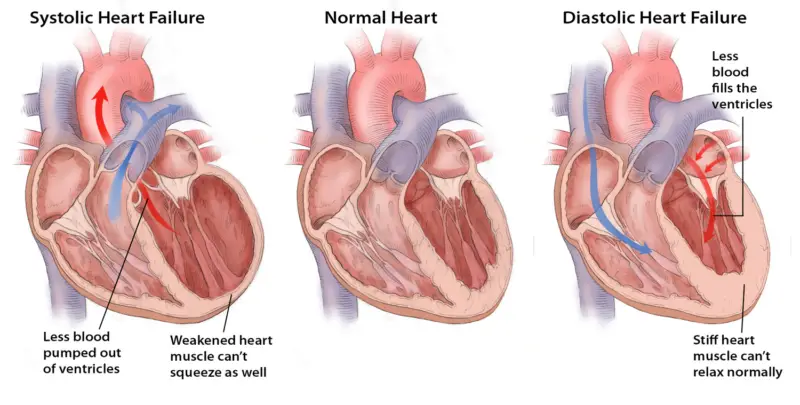Hello friends! Here are notes and detailed explanations for questions and answers to the NBME internal medicine Form 6 practice exam. Hope this helps and good luck!
NBME 4, NBME 5, NBME 6 Internal Medicine Forms Answers and Explanations
Abnormal Red Blood Cell Membrane: Abnormalities in the red blood cell (RBC) membrane can manifest in conditions like hereditary spherocytosis. In hereditary spherocytosis, a genetic mutation leads to a defective RBC membrane, resulting in a spherical shape, jaundice, anemia, and a high-normal mean corpuscular hemoglobin concentration (MHCH). The loss of central pallor is evident upon microscopic examination. A negative Direct Coombs test helps rule out autoimmune hemolytic anemia (AIHA). Cholecystectomy, a common intervention for these patients, can lead to chronic hemolysis and the formation of indirect bilirubin gallstones.
Anti-Centromere Antibody: The presence of anti-centromere antibody (ACA) is associated with CREST syndrome, a systemic autoimmune disorder. CREST is an acronym representing its primary clinical features, including calcinosis cutis, Raynaud phenomenon, esophageal dysmotility, sclerodactyly, and telangiectasia. The positive findings for ACA serve as a key serological marker for the diagnosis of CREST syndrome, aiding in the recognition and management of this condition.
Syringomyelia: Syringomyelia is characterized by the formation of a cystic cavity within the spinal cord. This cystic cavity can block the anterior white commissure, affecting the spinothalamic tract. The clinical consequence is a bilateral, cape-like loss of pain and temperature sensation. Notably, fine touch sensation remains preserved. Syringomyelia is often associated with Chiari 1 malformation, where the cerebellar tonsils herniate through the foramen magnum into the spinal canal.
Ruptured Papillary Muscle: A ruptured papillary muscle is an acute complication usually occurring within 3-5 days post-myocardial infarction (MI), particularly with involvement of the right coronary artery (RCA) and affecting the posteromedial papillary muscle. Clinically, patients present with severe pulmonary edema and a new holosystolic murmur due to regurgitation through the damaged mitral valve.
No Further Testing Indicated: In certain clinical scenarios where blood pressure is normal (140/90), hematocrit is within the normal range (42%), and no red blood cells are found in the urinalysis, an increased heart rate is likely due to pain or sympathetic nervous system activation. In such cases, further testing may not be necessary.
Ambulatory ECG Monitoring: Ambulatory ECG monitoring is indicated for patients experiencing syncope, near syncope, or dizziness occurring on a near-daily basis. It is also useful for assessing palpitations, atrial fibrillation (Afib) for rate or rhythm control, and monitoring ectopic or premature atrial beats.
Severity of Hypoxemia: In chronic obstructive pulmonary disease (COPD), increased shunting leads to heightened hypoxic vasoconstriction, resulting in pulmonary hypertension with loud second heart sound (S2), prominent pulmonary arteries, and jugular venous distension (JVD).
No Further Tests Indicated (Pre-operative Cardiac Assessment): Routine preoperative cardiac assessment includes an electrocardiogram (ECG), echocardiogram, and stress test. Stress tests are only indicated when the patient has poor functional capacity, experiencing breathlessness or chest pain with activity.
Jarisch-Herxheimer Reaction: The Jarisch-Herxheimer reaction is an acute febrile response following treatment for spirochetal infections like syphilis. It occurs due to the release of toxins from killed bacteria and is characterized by symptoms such as fever, chills, and myalgia.
Metformin: Diabetic patients with comorbid pneumonia have an increased risk of lactic acidosis if taking metformin. Metformin, an oral antidiabetic medication, is commonly used in the management of type 2 diabetes to improve insulin sensitivity and lower blood glucose levels. However, diabetic patients with comorbid pneumonia face an increased risk of lactic acidosis when taking metformin. Pneumonia can lead to systemic stress and tissue hypoxia, exacerbating the potential for metformin-associated lactic acidosis, a rare but serious side effect. Moreover, metformin is contraindicated in individuals with liver failure, as impaired hepatic function affects drug metabolism and clearance. Additionally, patients with renal failure are at risk of metformin accumulation, as the drug is primarily excreted through the kidneys. Therefore, metformin is not recommended in those with compromised renal function. Similarly, sepsis can further impair organ perfusion and function, increasing the risk of lactic acidosis, making metformin use inappropriate in such cases.
Surgical Excision of Apocrine Tissue: Hidradenitis suppurativa, involving the occlusion of follicular pilosebaceous units, commonly affects intertriginous skin areas such as the axilla and groin. Early radical excision of the affected area is the recommended treatment.
Hydration: Preventative measures for contrast-induced kidney injury involve peri-procedural saline hydration, using the lowest contrast agent volume, and avoiding nonsteroidal anti-inflammatory drugs (NSAIDs).
Acyclovir: Acute fever, altered mental status, or focal neurological symptoms lasting less than a week are consistent with HSV meningitis, warranting treatment with acyclovir.
Airway Compromise: Massive edema associated with tonsillitis may lead to airway compromise, necessitating prompt intervention.
Intravenous Administration of 0.9% Saline: For suspected variceal hemorrhage, the treatment involves placing two large-bore intravenous (IV) lines for volume resuscitation, administering IV octreotide, antibiotics, and subsequent endoscopic therapy.
80%: The term “80%” in the context of diagnostic testing implies that there are 80 positive infections identified on a new stool test, compared to 100 positive infections identified on the gold standard biopsy, resulting in a sensitivity of 80/100.
Washing the Area of Involvement: Following a needle stick injury, a patient with prior hepatitis B immunization does not require additional vaccination/booster but should clean and sterilize the affected area.
Inflammation Caused by Release of Cytokine: In Type 4 delayed hypersensitivity reactions, inflammation results from the release of cytokines by effector and memory T lymphocytes.
Corticosteroids Therapy: When platelet count drops below 30,000 or symptoms of immune thrombocytopenia (ITP) are present, treatment with corticosteroids, intravenous immunoglobulin (IVIG), or splenectomy may be necessary. Megakaryocytes seen on bone marrow aspiration support the diagnosis.
Chlamydia trachomatis: In a young patient with a tender, boggy prostate, white blood cells (WBCs) on urinalysis, and negative culture, the intracellular presence indicates Chlamydia trachomatis infection rather than gonorrhea.
Ulnar Nerve Compression: Ulnar nerve compression, affecting C8-T1, leads to hypothenar atrophy and dysfunction of interosseous muscles, resulting in impaired finger ab/adduction (paper slipping from fingers).
Swallowing Study: Oropharyngeal dysphagia, presenting as a chronic cough after meals, mild dysarthria, and a history of multi-infarct dementia, is diagnosed using a video fluoroscopic barium swallow.
Iron: Anemia with hypochromasia (central pallor) is consistent with iron deficiency anemia. It differs from sideroblastic anemia (lack of basophilic stippling) and megaloblastic anemia (no hyper-segmented neutrophils).
Serum Protein Electrophoresis: Multiple myeloma, characterized by hypercalcemia, renal failure, anemia, and bone lytic lesions, is diagnosed through serum protein electrophoresis.
Subcutaneous Administration of Enoxaparin: Evidence of deep vein thrombosis (DVT) on ultrasound warrants the next best step, subcutaneous enoxaparin, as it provides rapid anticoagulation compared to the delayed onset of warfarin.
Lisinopril: Lisinopril, an angiotensin-converting enzyme inhibitor (ACEi), reduces mortality in heart failure with reduced ejection fraction (HFrEF). In an acute setting, metoprolol and spironolactone however can potentially reduce cardiac output.
Administration of Calcium Gluconate IV: Post-parathyroid gland removal, symptoms of tetany, cramps, and seizures indicate hypocalcemia. Treatment involves intravenous calcium gluconate.
Rhabdomyolysis: Barbiturates, leading to immobility, can cause rhabdomyolysis characterized by increased creatine kinase (CK), elevated phosphate, acute kidney injury (AKI), and blood detected on urine dipstick but absent on microscopy.
Anaerobic Empyema: A right lower lobe infiltrate accompanied by foul-smelling fluid suggests aspiration, likely involving anaerobes.
Begin Lisinopril Therapy: In a patient with diabetes and hypertension, initiating ACEi therapy with lisinopril reduces mortality and slows the progression of diabetic nephropathy.
Alveolar Destruction and Fibrosis: In obstructive lung disease such as emphysema, alveolar destruction leads to a decreased diffusing capacity of the lungs for carbon monoxide (DLCO), resulting in decreased breath sounds.
Full Thickness Biopsy: In cases of suspected malignancy (size > 6mm, asymmetry, multiple colors), a full-thickness biopsy and excision are warranted once the diagnosis is confirmed.
Serum Calcium Concentration: The Ranson criteria for pancreatitis include factors such as a white blood cell count > 16,000, age > 55, glucose > 200 mg/dL, AST > 250, and LDH > 350.
Oral Ibuprofen: Diffuse ST elevation, PR depression, pleuritic chest pain relieved by sitting up, and friction rub are consistent with pericarditis. Treatment involves oral ibuprofen as first-line therapy, with colchicine and glucocorticoids as second-line options.
Allergic Bronchopulmonary Aspergillosis: Allergic bronchopulmonary aspergillosis is a hypersensitivity response to Aspergillus growing in the lung mucus and is associated with asthma.
Urine Free Cortisol Concentration in a 24-Hour Specimen: Features such as weight gain, hirsutism, truncal obesity, striae, irregular menses, and acne are consistent with Cushing syndrome, and a urine free cortisol concentration in a 24-hour specimen aids in diagnosis.
Prepatellar Septic Bursitis: Unaffected range of motion coupled with a red, swollen area overlying the patella and fever indicates septic bursitis complicating the condition.
Insufficient Inhibition of Neutrophil Elastase: In a young patient with obstructive lung disease, X-ray abnormalities, and a family history of early emphysema, insufficient inhibition of neutrophil elastase may suggest alpha-1 antitrypsin deficiency.
↓ K+, ↓ Cl-, ↑ pH: Vomiting leads to gastrointestinal loss of hydrochloric acid (HCl), production of bicarbonate (HCO3-), and subsequent activation of the renin-angiotensin-aldosterone system (RAAS), resulting in loss of potassium, reabsorption of bicarbonate, and metabolic alkalosis.
Avascular Necrosis: Avascular necrosis (AVN), also known as osteonecrosis, is a condition characterized by the death of bone tissue due to a lack of blood supply. Steroid treatment for vasculitis can predispose individuals to AVN as steroids may lead to changes in lipid metabolism, coagulation, and vascular endothelial function, all of which contribute to the compromised blood flow to the affected bone. The femoral head is a common site for AVN, and a crescent sign on magnetic resonance imaging (MRI) is a characteristic finding indicating the presence of subchondral bone collapse. This crescent-shaped area represents the infarcted region where the bone structure has weakened, potentially leading to joint deformities and functional impairment.
Acute Tubular Necrosis: A decreased urine output and the presence of granular casts indicate acute tubular necrosis.
Pap Smear + PCP Prophylaxis: In a patient with a CD4+ count < 500, Pap smear screening for cervical dysplasia and prophylaxis against Pneumocystis jirovecii (PCP) with trimethoprim-sulfamethoxazole (TMP-SMX) are indicated.
Switch from Glyburide and Metformin to Intermediate Acting Insulin: Elevated creatinine after initial treatment suggests metformin-associated lactic acidosis. In cases where glycemic control remains inadequate, despite metformin, switching to insulin is a prudent choice.
Adverse Effect of Verapamil: Constipation is a common adverse effect of verapamil, a calcium channel blocker. In diabetic patients without neuropathy, constipation is less likely to be due to colonic neuropathy.
Subclavian Steal Syndrome: Stenosis or occlusion of the proximal subclavian artery leads to reversal of blood flow in the ipsilateral vertebral artery, resulting in upper extremity ischemia (pain, fatigue, paresthesias) and/or vertebrobasilar insufficiency (dizziness, ataxia, disequilibrium).
Prerenal Azotemia: Prerenal azotemia refers to a condition characterized by a reversible increase in blood urea nitrogen (BUN) and serum creatinine levels, primarily caused by decreased blood flow to the kidneys. It is typically a consequence of inadequate perfusion to the renal tissues rather than intrinsic kidney damage. Conditions leading to prerenal azotemia include severe dehydration, hemorrhage, heart failure, or conditions causing significant reductions in effective circulating blood volume. Insufficient blood flow to the kidneys triggers a series of compensatory mechanisms, such as the activation of the renin-angiotensin-aldosterone system (RAAS) and sympathetic nervous system, aimed at maintaining blood pressure and perfusion to vital organs. However, prolonged or severe cases of reduced renal perfusion can lead to impaired glomerular filtration, resulting in the accumulation of nitrogenous waste products in the bloodstream.
Renal Biopsy: A history of intravenous drug use (IVDU), hepatitis, significant hematuria, proteinuria, and dysmorphic red blood cells in the urine indicate membranoproliferative glomerulonephritis, necessitating a renal biopsy for diagnosis.
Cigarette Smoking: Cigarette smoking is associated with the greatest increased risk for myocardial infarction.
Recurrence of Breast Cancer: Hypercalcemia greater than 14, especially in breast, gynecological, squamous cell, or renal cell carcinoma, suggests hypercalcemia of malignancy. Elevated 1,25-dihydroxyvitamin D levels may be observed in lymphoma.
Weight Loss: Osteoarthritis is a degenerative joint disorder characterized by the breakdown of joint cartilage and underlying bone. Excessive body weight places increased stress on weight-bearing joints, such as the knees and hips, accelerating the wear and tear on the joint structures. This heightened mechanical stress contributes to the development and progression of osteoarthritis. Therefore, maintaining a healthy weight is often emphasized as a preventive measure to reduce the risk of osteoarthritis and alleviate symptoms in those already affected by the condition.
Check out: NBME 4, NBME 5, NBME 6 Internal Medicine Forms Answers and Explanations
Check out these popular articles
Circulatory System: Blood Flow Pathway Through the Heart
Ectoderm vs Endoderm vs Mesoderm
Circulatory System: Heart Structures and Functions
Ductus Arteriosus Vs Ductus Venosus Vs Foramen Ovale: Fetal Heart Circulation
Autocrine vs Paracrine vs Endocrine: What are the Differences?
Upper Vs Lower Respiratory System: Upper vs Lower Respiratory Tract Infections
Seven General Functions of the Respiratory System
Kidney Embryology & Development: Easy Lesson
Psychology 101: Crowd Psychology and The Theory of Gustave Le Bon
Cell Membrane Dynamics: Flippase Vs Floppase Vs Scramblase
Shoulder Abduction Muscles: Medical Anatomy and USMLE
Top Websites Like Sparknotes: 15 Free Sites and Resources Similar to Sparknotes
Cell Membrane Fluidity: Factors That Influence and Increase the Cell Membrane Fluidity
NBME 4, NBME 5, NBME 6 Internal Medicine Forms Answers and Explanations
Copyright © 2024 Moosmosis Organization: All Rights Reserved
All rights reserved. This essay first published on moosmosis.org or any portion thereof may not be reproduced or used in any manner whatsoever
without the express written permission of the publisher at moosmosis.org.
Please Like and Subscribe for free to our Email List at moosmosis.org to support our open-access youth education initiatives!
Hello friends! Here are notes and detailed explanations for questions and answers to the NBME internal medicine Form 6 practice exam. Hope this helps and good luck! anatomy, Biology, cell biology, education, health, medicine, stem, technology, anemia, autonomic nervous system, bleeding, brain, brain bleed, brain stem, brain surgery, cardiologist, cardiology, central nervous system, cerebellum, cerebrum, college, ct head, ECG, epidural hematoma, gray matter, heart attack, heart failure, hemorrhage, hemorrhagic stroke, internal medicine, interventional radiology, ischemic stroke, life, mcat, MRI, MRI brain, nbme, NBME Form 6, nbme medicine, nerves, neurology, neuron, neuroradiology, neuroscience, neurosurgery, NMBE medicine, parasympathetic, peripheral nervous system, physiology, radiology, reflex, school, science, somatosensory, STEP exam, stretch reflex, stroke, student, subarachnoid hemorrhage, subcortical cerebrum, subdural hematoma, surgery, sympathetic, TIA, transient ischemic attack, university, upper motor neuron, white matter Moosmosis









